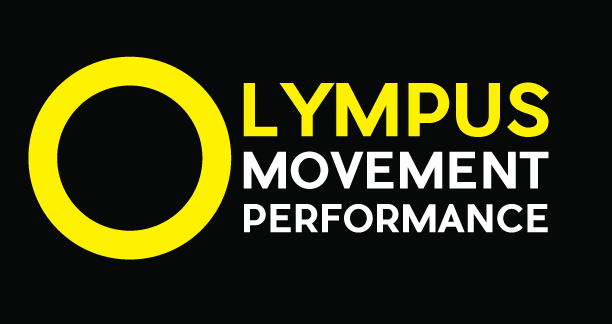Should Dancers and Gymnasts be Weight Training?
4/05/2022
Dr. Jessica Robinson, PT, DPT
The short answer: yes! Weight training can have a multitude of benefits for dancers and gymnasts alike. Weight training is not a new concept for these two groups and has been slowly gaining traction over recent years; however, it does still come with some uncertainty and occasional controversy.
Traditionally, conditioning and cross training for dancers and gymnasts has consisted of Pilates, yoga, band work, and mainly body weight and/or sport specific exercises. While these forms of conditioning are still good options and have their place, it has been shown that they are not sufficient enough to reproduce the forces placed on the body during training and competition activities. For example, in gymnastics, forces being applied to the body when doing skills or landings can reach upwards of 15x that of body weight.
The reason weight training can produce greater increases in muscular strength and endurance than body weight exercises alone is the fact that weight training results in a larger recruitment of muscle fibers. Tailored programming can also help to develop the neuromuscular systems in the body to increase both the activation and efficiency of muscle groups. Other specific benefits can include:
Increased endurance
Increased jump height
Increased cardiovascular capacity
Improved speed and power
Improved bone density (helps prevent osteoporosis)
Reduced risk for injury
Consistent strength training also creates a stronger foundation from which dancers and gymnasts can work. When dancers/gymnasts are well-prepared for the demands of their sport, they are better able to focus on the artistry and enhancing technique rather than on the ability to merely complete the movements.
With so many benefits, the real question is why aren’t dancers and gymnasts weight training more often like we see in other types of athletics?? There are some common myths associated with weight training amongst both these groups that we’ll go ahead and address.
“I will get bulky”
One of the most common misconceptions about weight training is that it will make you look “bulky”. Sports that historically have a larger emphasis on aesthetics tend to shy away from weight training due to this (although, this is also changing, thankfully). However, the reality is that putting on enough muscle mass to “bulk up” is actually a lot harder than you would think. It requires detailed attention to a training and nutrition program with the appropriate number of sets/reps and progressions. Lifting weights a few times a week will make you stronger but is not going to create huge changes in muscle size.
“I will lose flexibility”
Another misconception is that athletes will lose their flexibility by lifting weights. This can be seen as a concern in sports such as these where greater than normal flexibility is required and desired. However, contrary to popular thought, lifting weights when executed properly and through the full range of motion will not only maintain but can actually improve mobility/flexibility. By general rule of thumb, our bodies will not allow us to increase motion until we can control what we already have.
“I will get injured”
In reality dancers and gymnasts are more likely to be injured in their sport than they are while cross training or conditioning. Most injuries occur from overuse. Studies show that dancing for 5 hours a day or more can lead to an increased risk for stress fractures and other injuries. So when our only conditioning consists of sport-specific activities, we are just adding to that repetition. The reality is that yes, if you lift weights the wrong way without attention to proper programming or technique, then you are susceptible to injury. However, with the appropriate guidance/coaching, the risk for injury is actually quite low.
“I won’t be targeting the correct muscles needed for my sport”
There is a common fear that with any sort of weight training or conditioning, dancers and gymnasts will over train muscles that aren’t the primary ones needed to carry out the movements they perform. The problem with this, however, is that we need a balance in strength between all of our muscles. When there is an imbalance, we tend to end up with less than ideal movement patterns which can ultimately lead to injury.
As we can see, weight training is definitely an effective way to enhance performance in both of these sports. While it is effective for building strength, it is important to note that it is only one aspect of cross training/conditioning. It should not be seen as a replacement for other forms of conditioning or dance/gymnastics specific training but rather as a compliment to bring about greater results, creating a well-rounded and more resilient athlete/individual.
Sources:
1. Lauersen JB;Bertelsen DM;Andersen. “The Effectiveness of Exercise Interventions to Prevent Sports Injuries: A Systematic Review and Meta-Analysis of Randomised Controlled Trials.” British Journal of Sports Medicine, U.S. National Library of Medicine, https://pubmed.ncbi.nlm.nih.gov/24100287/.
2. Brown, Andrea C., et al. “Effects of Plyometric Training versus Traditional Weight Training on Strength, Power, and Aesthetic Jumping Ability in Female Collegiate Dancers.” Latest TOC RSS, J. Michael Ryan Publishing Inc., 1 June 2007.
3. Iversen VM;Mork PJ;Vasseljen O;Bergquist R;Fimland MS; “Multiple-Joint Exercises Using Elastic Resistance Bands vs. Conventional Resistance-Training Equipment: A Cross-over Study.” European Journal of Sport Science, U.S. National Library of Medicine, https://pubmed.ncbi.nlm.nih.gov/28628370/.
4. Koutedakis, Yiannis, et al. “(PDF) Muscular Strength: Applications for Dancers.” ResearchGate, https://www.researchgate.net/publication/44392574_Muscular_Strength_Applications_for_Dancers.
5. Shift Movement Science. Ultimate Gymnastics Strength Guide.



